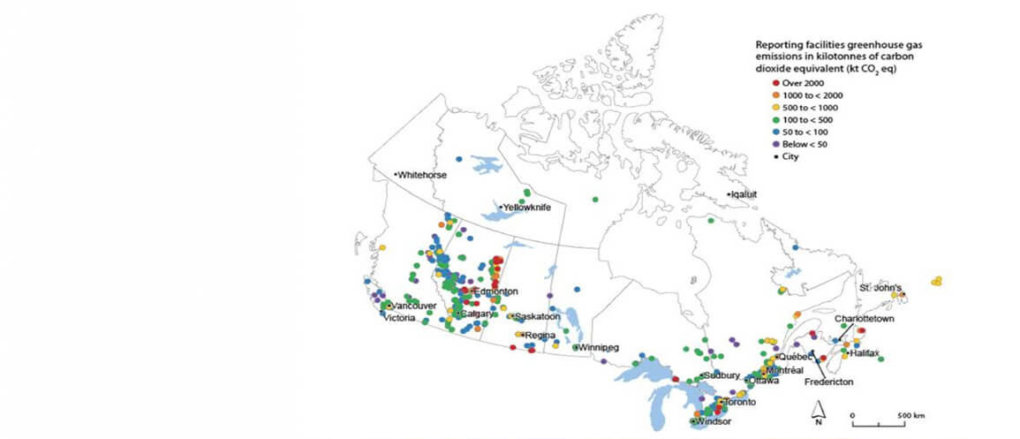We have good news for all of you data junkies!
On April 13, Environment and Climate Change Canada (ECCC) released its greenhouse gas (GHG) emissions data for 2015. The data details GHG pollution trends and emissions reported from industrial sectors across Canada, including mining, oil and gas extraction, energy utilities, manufacturing, etc.
The GHG emissions collected under the Greenhouse Gas Reporting Program (GHGRP) for 2015 represent more than one third (37 per cent) of Canada’s total GHG emissions in 2015 (722 megatonnes) and more than half (58 per cent) of Canada’s industrial GHG emissions, according to the most recent National Inventory Report. It is important to note that the GHGRP data applies to large GHG-emitting industries and does not cover all sources of GHG emissions.
A total of 563 businesses reported their emissions in 2015, collectively emitting a total of 264 megatonnes (Mt) of GHGs. Alberta accounted for the largest amount of reported emissions, with approximately 53 per cent of the total, followed by Ontario (16 per cent), Saskatchewan (nine per cent), Quebec (seven per cent), and New Brunswick (three per cent).
New Brunswick had a total of 11 businesses report emissions in 2015, totaling 7,259,253 tonnes, which was slightly down from the 7,544,280 tonnes reported in 2014. The largest emitter was the Irving Oil Refinery, which accounted for 41 per cent of the province’s total emissions, followed by the Belledune Generating Station (29 per cent), and the Coleson Cove Generating Station (11 per cent).

ECCC released a report on the data, which includes the following highlights:
- The reported emissions are, for the most part, evenly distributed across three sectors: (i) Mining, Quarrying, and Oil and Gas Extraction (33 per cent), (ii) Utilities (32 per cent), and (iii) Manufacturing (29 per cent). Among all businesses, those engaged in electricity generation and oil/gas extraction account for 62 per cent of the total.
- Reported GHG emissions increased by three per cent (8 Mt) in the last five years, consistent with the upward trend in emissions reported by the National Greenhouse Gas Inventory. Emissions from non-conventional oil extraction businesses located in Alberta increased by 15 Mt, but were partly offset by the 8 Mt decrease in emissions from Ontario-based power plants resulting largely from the closure of coal-fired electric power generation facilities.
- Since 2005, total emissions from all reporting sectors decreased by five per cent (14 Mt). The Utilities and Manufacturing sectors experienced the largest declines (38 Mt and 16 Mt, respectively), while reported emissions increased by 40 Mt from businesses in the Mining, Quarrying, and Oil and Gas Extraction sector, largely in Alberta (36 Mt).
Environment and Climate Change Canada is considering changes to the reporting requirements under the GHGRP, starting in 2017, to improve the consistency and comparability of GHG data. Proposed changes include lowering the threshold for reporting from 50 to 10 kt CO2 eq. per year and requiring additional data from businesses when reporting. ECCC is currently consulting with stakeholders on the proposed changes for the 2016 reporting year.
For more information, see:
- 2015 Facility Greenhouse Gas Data
- New Brunswick 2015 Facility Greenhouse Gas Data
- Environment and Climate Change Canada’s complete report Canadian Environmental Sustainability Indicators: Greenhouse Gas Emission
- Notice of changes to reporting greenhouse gas emissions for 2016

